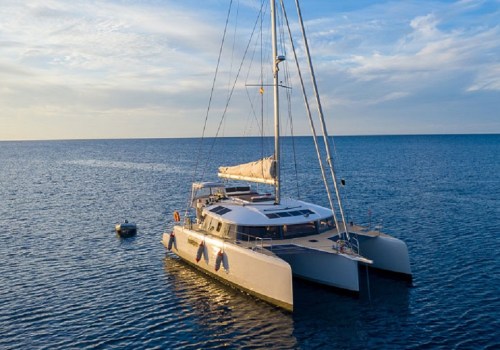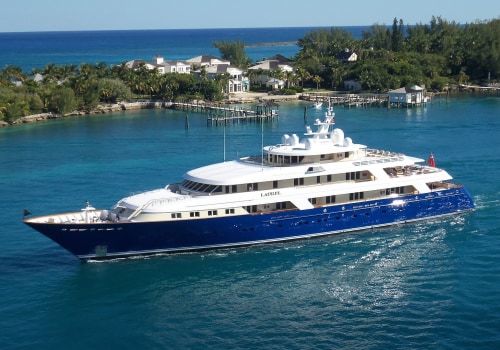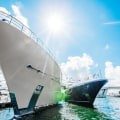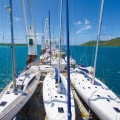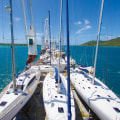In today's world, the demand for yacht shipping has increased significantly, as more and more people are looking to explore different waterways and travel to new destinations. Navigating waterways and bridges can be a daunting task, especially for those who are not familiar with the process. That's why we have created this comprehensive guide to help you understand all the options and costs involved in yacht shipping. Whether you're a yacht owner looking to transport your vessel to a new location or a potential buyer interested in purchasing a yacht from another state or country, this guide will provide you with all the necessary information to make an informed decision. We have gathered all the essential details about domestic yacht shipping and compiled them into one easy-to-read article. From different shipping methods to associated costs, we have covered it all.
So, sit back, relax, and let us take you on a journey through the world of yacht shipping options and costs. Navigating waterways and bridges is a crucial part of transporting yachts domestically. It involves understanding the different routes and methods available for safely moving a yacht from one location to another. This process is essential for yacht owners who need to transport their vessel for various reasons, such as maintenance, relocation, or participation in events. The first step in navigating waterways and bridges is to have a good understanding of the basics. This includes knowing the different types of waterways and bridges, as well as their specific regulations and restrictions.
For example, there are different rules for navigating canals versus open waters, and different size limits for bridges depending on the type of vessel. One of the most common options for transporting a yacht is using a shipping company. These companies specialize in transporting large vessels and have the necessary equipment and expertise to ensure a safe journey. They also offer various services, such as loading and unloading the yacht, obtaining necessary permits, and providing insurance coverage. Another option is to hire a professional captain to sail your yacht for you. This can be a more cost-effective option for shorter distances or if you have a smaller vessel.
However, it is important to make sure the captain is experienced and has all the necessary licenses and certifications. In addition to these options, there are also self-sailing options for those who are experienced in sailing and have the necessary knowledge and equipment. This can be a more adventurous option, but it also requires careful planning and preparation. When considering your options for navigating waterways and bridges, it is essential to also consider the costs involved. Shipping companies typically charge based on the size and weight of the yacht, as well as the distance traveled. Hiring a professional captain may involve additional fees for their services, while self-sailing may only have fuel and maintenance costs. In conclusion, navigating waterways and bridges is a crucial aspect of domestic yacht shipping.
It requires a good understanding of the basics, as well as careful consideration of the various options and costs involved. Whether you choose to use a shipping company, hire a professional captain, or self-sail, it is important to prioritize safety and ensure all necessary permits and regulations are followed. We hope this guide has provided valuable information for yacht owners and those interested in learning more about this process. Safe travels!
Choosing the Right Route
Before embarking on a yacht shipping journey, it is important to carefully consider the route you will take.This will depend on factors such as the size and weight of your yacht, as well as any height restrictions along the way.
Types of Waterways
Canals: Canals are man-made waterways that are often used for yacht shipping due to their calm and controlled conditions. However, there may be size restrictions and tolls to consider.Rivers:
Rivers can also be used for yacht shipping, but they may have faster currents and unpredictable weather conditions to navigate. It's important to research the specific river and its potential challenges before choosing this option.Lakes:
Lakes can provide a smooth and scenic route for yacht shipping, but they may also have restrictions and regulations to follow. It's important to check with local authorities before choosing this option.Oceans:
Oceans are the most common and challenging waterways used for yacht shipping.They require careful planning and consideration of weather conditions, potential hazards, and international shipping laws.
Bridges and Their Limitations
When navigating waterways, it is essential to be aware of any bridges along the route. Bridges have height and width limitations that must be taken into account when transporting yachts. This is an important aspect to consider, as failing to comply with these limitations can result in damage to the yacht, the bridge, or both. The height limitation of a bridge is determined by its clearance level, which is the distance between the surface of the water and the lowest point of the bridge.This clearance level can vary depending on factors such as tides and weather conditions. It is crucial to know the clearance level of any bridges along the route and ensure that your yacht's height is within this limit. Width limitations also play a significant role in navigating bridges. Most waterways have narrow points where the bridge provides a channel for boats to pass through.
It is important to know the width of your yacht and compare it to the width of the bridge's channel. If your yacht is too wide, you may need to consider alternate routes or make arrangements for temporary modifications to your yacht's structure. Aside from physical limitations, it is also essential to be aware of any weight restrictions on certain bridges. Some bridges may have weight limits due to structural concerns or environmental regulations.
It is crucial to research these limitations and ensure that your yacht's weight does not exceed them. To navigate bridges safely, it is recommended to work with a professional yacht shipping company that has experience in dealing with these limitations. They can provide valuable guidance and make necessary arrangements for modifications or alternate routes if needed. It is also important to communicate with the captain and crew of the yacht to ensure they are aware of these limitations and can navigate accordingly. As you can see, navigating waterways and bridges is a complex but necessary aspect of yacht shipping.
By understanding the different routes and options available, you can ensure a smooth and successful shipping experience for your yacht. Don't hesitate to consult with professionals for assistance, and always prioritize safety above all else.


